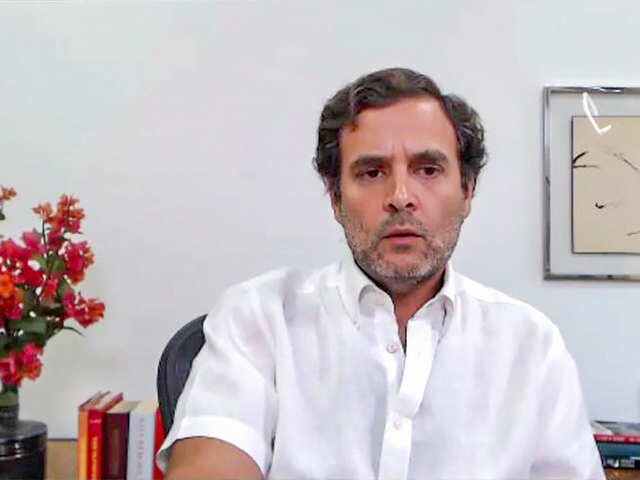
Thiruvananthapuram, May 28: When renowned ornithologist Salim Ali conducted the bird survey of southern Kerala 79 years ago he was moved not just by the region's diversity of avifauna but the panoramic beauty of the setting.
If Ali was alive now, he would certainly be a sad man as serious habitat destruction and degradation pose a grim threat to survival of the bird population in the state.
This is the picture that emerges from a recent bird survey commissioned by the state Forest Department tracing Ali's footprints.
In the 1933 survey, Ali covered the Travancore and Cochin regions of Kerala, both princely states then.
Ali showed interest in surveying this region as part of an initiative of the Bombay Natural History Society to study and record the avian diversity of different regions of India.
The first survey in this series was conducted in the Hyderabad State in 1931 and the exercise covered the central Indian states of Bhopal, Gwalior, Indore and Dhar (1938), Mysore (1939) and Gujarat (1944-48), apart from Travancore and Cochin.
Ali, in his autobiography 'The fall of a sparrow' (1985) noted that "of all my regional bird surveys between the years 1930 and 1950 which I regard as the most productive period of my career, perhaps the one that gave me both as to the field work and writing up its results was the ornithological survey of Travancore-Cochin..."
He also acknowledged that the 1933 survey provided the basis for his work 'The birds of Kerala'
Interestingly, Ali's wife Tehmina was part of the survey throughout and his cousin and leading naturalist Humayun Abdulali took part in it for a short period.
After putting up a proposal to the Travancore Government, all that Ali sought was Rs 2000 to cover travel and incidental expenses, free use of inspection bungalows and forest houses and assistance from local revenue, forest and police officials. "We are lucky that a comprehensive record of birds of South Kerala has been drawn up by an authority in the field like Salim Ali. Though the methodology of bird surveys have changed since 1930s, Ali's accounts have come as a great help when we traced his trail after seven decades", C Sashikumar, who was a member of the 2010 survey, told PTI.
A book titled 'Along the trails of Salim Ali' was brought out by the state Forest Department recently based on the findings of the 2010 survey.
"Apart from the matchless beauty of South Indian hills, the southern extremity of the Sahyadri or Western Ghats, and the lushness and grandeur of their primeval evergreen forests, there was something special in much of their animal and plant life that stood out distinctly from the rest of the peninsula", Ali then observed.
Ali, who made several subsequent trips to Kerala in his eventful career, later voiced concern over the threat posed to the winged beauties by the vanishing of forests and degradation of environment.
In the late 1960s, he noted "since the survey, particularly since our Independence, I have visited Kerala every few years and been more and more depressed and scandalised each time by the mindless vandalism being perpetrated by successive state governments and crooked politicians in the devastation of virgin evergreen forests to settle repatriates and for so-called development projects..."
According to Sashikumar, a leading ornithologist and author of several works and research papers on avifauna, Ali's premonitions have come true as the forests have been destroyed largely for converting them into plantations, felling trees or for big projects like hydro-electric power.
"The recent survey has clearly brought out this poor picture and stringent conservation initiatives are essential to protect the nature from further assault," he said.
The survey, which painstakingly followed Ali's footprints, found that all species of vultures have become extinct locally in Kerala but for a small breeding population of white-backed vultures in Wayanad in north Kerala.
The survey called for an immediate vulture survey to study the current status and measures for augmenting the existing population.
On the positive side, among the 16 endemic birds, the blue-winged Parakeet, Small Sunbird, Indian Rufous Babbler and White-bellied Treepie have a seemingly healthy population.
However, high altitude birds like Grey-breasted Laughing Thrush, Black-and-Orange Flycatchers, White-bellied Shortwing and Nilgiri Flycatcher are facing serious habitat destructions and fragmentation.
Similarly, large-scale decline of Nilgiri Wood pigeon, an IUCN Red List category (a list which assesses the risk of extinction to species within a political management unit) is a cause for concern.
According to ornithologists, the Western Ghats, a major segment of Indian bio-diversity, has 16 endemic species of birds, which are found nowhere else in the world, the survey findings noted.
But this ecological hot spot is facing grim threat and its low land forests have almost completely been decimated and remaining parts severely fragmented, harming bio-diversity of the Ghats.
The recommendations include total ban on traffic through the pristine Anamudi Shola National Park, protection of the relict Shola patches as conservation reserves, regeneration of Silent Valley-Karinkulam Grass land, conservation of bird prey, regular monitoring of threatened bird species and regulation of tourism in sensitive areas like Eravikulam National Park, Sashikumar said.
Conservation of wetland areas like those around the lakes and backwaters is an area that called for urgent measures. Since the land in these areas are mostly in private possession, a community initiative is required for their protection.
Sashikumar said a bird survey of the northern district of Kerala, known as the Malabar region, was conducted a couple of years ago but it was yet to be published in the book form by the Forest Department.





Comments
Add new comment